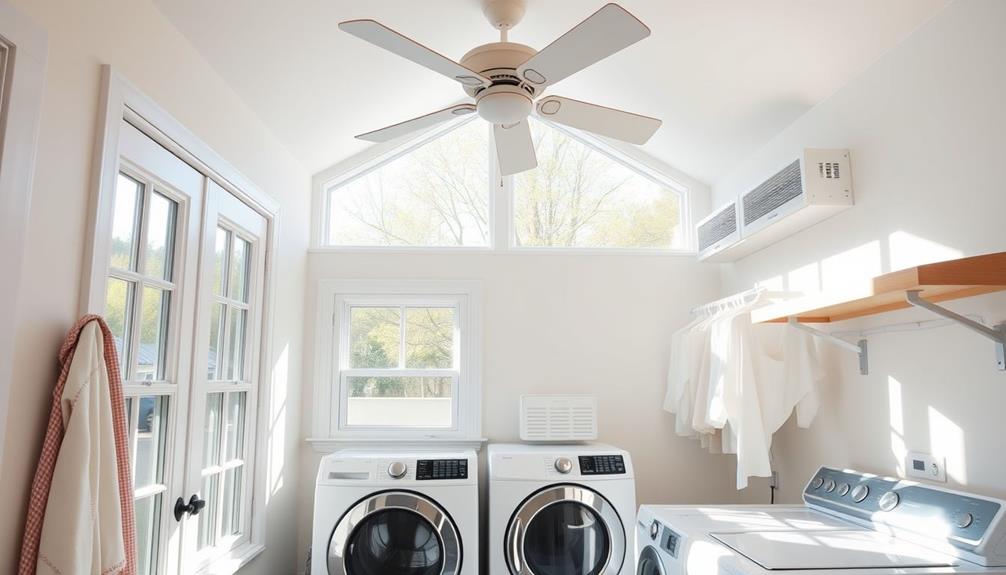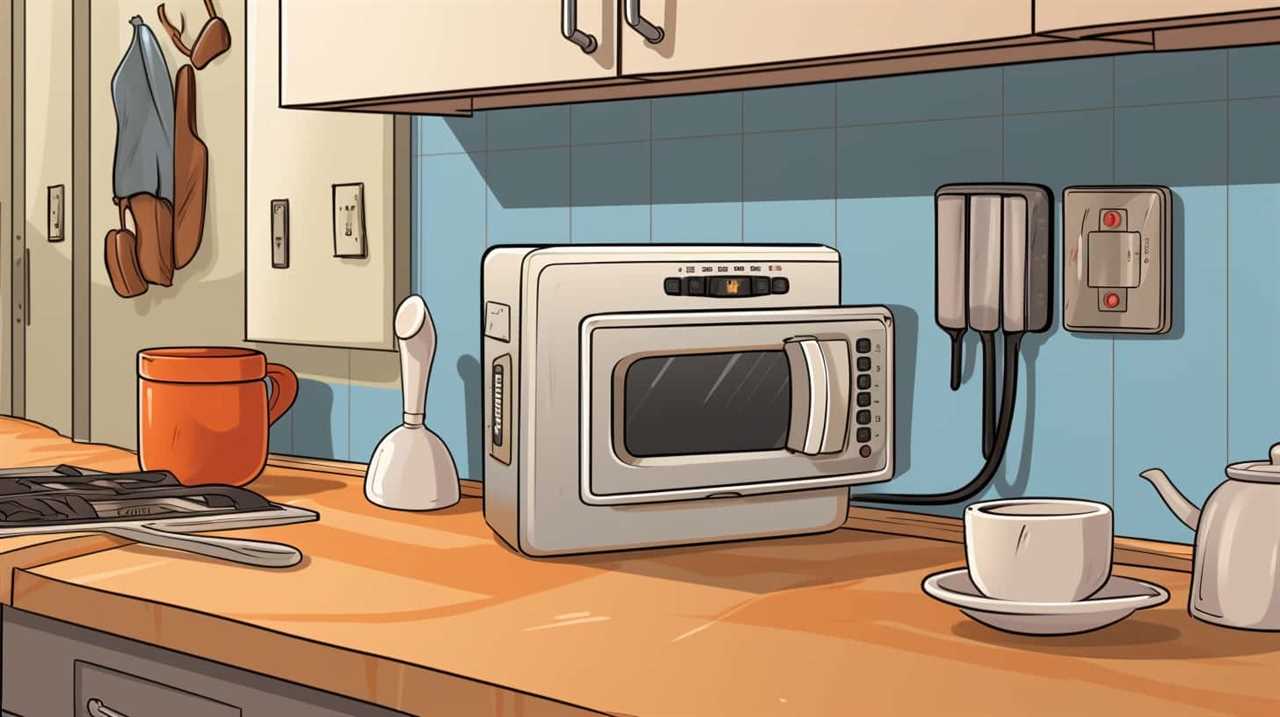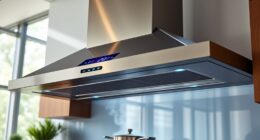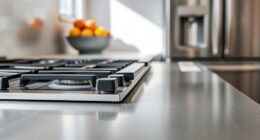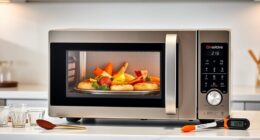To ensure proper ventilation in your laundry room, first make sure that your dryer vent is exhaust directly outside. Use a smooth metal duct that is at least 4 inches in diameter and no longer than 35 feet, considering bends. Installing an exhaust fan can help manage heat and humidity effectively. Open windows during laundry times to promote natural airflow, and keep vents clear of any obstructions through regular maintenance. Don’t overlook checking for lint buildup in dryer vents, as this can create fire hazards. By understanding these key aspects, you will improve both air quality and efficiency in your laundry area. More helpful tips are coming up.
Key Takeaways
- Ensure proper dryer vent installation, with a minimum diameter of 4 inches and a maximum length of 35 feet, to prevent airflow restrictions.
- Utilize exhaust fans or Energy Recovery Ventilators (ERVs) to effectively manage humidity and improve air quality in the laundry room.
- Regularly clean dryer vents and ducts to prevent lint buildup, reducing fire hazards and maintaining dryer efficiency.
- Incorporate natural ventilation by opening windows during laundry to enhance airflow and decrease humidity levels.
- Consult professionals for installation and maintenance to ensure compliance with safety codes and optimal performance of ventilation systems.
Importance of Laundry Room Ventilation
Proper ventilation in your laundry room isn't just a luxury; it's a necessity. Without it, you risk high humidity levels that can lead to mold and mildew growth, threatening the integrity of your room's structure.
When your washer goes through its spin cycles, it can produce notable moisture. If this humidity isn't properly managed, you'll end up with an uncomfortable space and potential health risks from airborne mold spores and lint.
Additionally, incorporating a properly installed dryer vent can help mitigate moisture issues effectively. The International Building Code emphasizes that your dryer vent must exhaust directly outside. This practice not only minimizes heat and moisture buildup but also greatly lowers fire hazards associated with lint accumulation.
Inadequate ventilation can also drive up your energy costs, as your appliances work harder to compensate for the excess humidity.
Regular maintenance of your ventilation system is vital. Clogged or blocked vents can lead to serious issues, including increased chances of lint fires and persistent moisture problems.
Types of Ventilation Systems
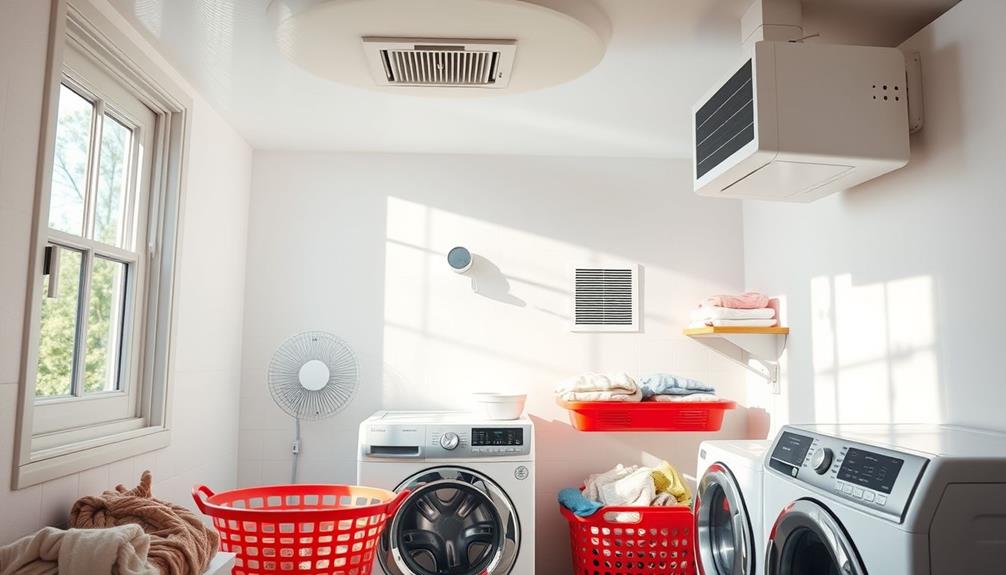
When it comes to ventilating your laundry room, you've got several options to evaluate.
Natural ventilation can be a great choice if your space has windows, as it allows for a fresh air exchange that can help reduce humidity.
Additionally, incorporating energy-efficient models can further enhance airflow while saving on energy costs.
Mechanical ventilation is essential in enclosed areas.
Additionally, energy recovery systems offer an efficient way to improve air quality and save on energy costs.
Natural Ventilation Benefits
Natural ventilation offers numerous benefits for your laundry room, especially when you utilize windows and doors effectively. By opening windows during laundry processes, you can enhance airflow, allowing fresh air to enter and considerably reducing humidity levels generated by washing machines and dryers.
This simple action helps dissipate heat and moisture, minimizing the risk of mold growth and mildew, which can thrive in damp environments. Additionally, incorporating an air purifier can also improve the air quality by reducing allergens and odors that may linger in the space.
Properly placing vents in conjunction with natural ventilation can additionally improve air circulation, creating a more comfortable and healthier space. Not only does this approach promote air exchange, but it also contributes to better indoor air quality, reducing the presence of stale air and odors often associated with laundry tasks.
One of the most appealing aspects of natural ventilation is its cost-effectiveness. Since it relies on existing structural features like windows, you avoid the expenses associated with additional mechanical systems.
Moreover, incorporating windows not only brightens the room with natural light but also fosters that essential airflow, ensuring your laundry room remains a pleasant, well-ventilated space.
Embrace natural ventilation, and enjoy the myriad benefits it brings to your laundry routine.
Mechanical Ventilation Options
If you're looking to enhance the air quality in your laundry room, mechanical ventilation options can be a game-changer.
These systems, including exhaust fans and ducted systems, effectively remove heat and humidity, preventing mold growth and improving indoor air quality. Installing exhaust fans is a straightforward way to guarantee your laundry room is properly vented, helping to expel stale air while drawing in fresh air.
Additionally, you might want to take into account the importance of using transparent pricing when hiring professionals for installation, guaranteeing there are no hidden costs involved.
Energy Recovery Ventilators (ERVs) take ventilation a step further. They extract hot, humid air and replace it with fresh outdoor air, all while conserving energy. This not only improves indoor air quality but also keeps your energy bills in check.
If you're concerned about ductwork, think about ductless mini-split systems. They provide both temperature control and humidity regulation without the hassle of extensive installations, making them perfect for laundry rooms lacking existing HVAC systems.
Energy Recovery Systems
Energy Recovery Ventilators (ERVs) stand out as an efficient solution for laundry room ventilation, especially in humid climates where maintaining balanced humidity levels is essential.
These systems effectively remove hot, humid air while replacing it with fresh outdoor air, considerably enhancing indoor air quality. By utilizing energy recovery, ERVs transfer heat and moisture between incoming and outgoing air, which conserves energy and reduces the need for additional heating or cooling.
Furthermore, the principles of geothermal energy basics can inform the design of these systems, as they emphasize the importance of using the earth's natural resources to optimize energy efficiency.
With ERVs, you can lower your electricity bills by minimizing the energy required to condition fresh air, making them an eco-friendly choice for laundry ventilation. This is particularly valuable in humid areas, as maintaining balanced humidity levels helps prevent mold growth and mildew, keeping your laundry space healthy and clean.
Installing an ERV not only improves overall home comfort but also guarantees compliance with energy efficiency standards.
By integrating this advanced ventilation system into your laundry room, you're investing in a solution that prioritizes both air quality and energy savings.
With ERVs, you can enjoy a fresh, comfortable environment while supporting sustainable practices.
Key Ventilation Requirements

Effective ventilation is vital for any laundry room, guaranteeing that moisture and heat are properly managed. To achieve ideal airflow and comply with building codes, you'll need to take into account several key requirements.
Firstly, install an exhaust fan that provides at least 50 CFM to effectively manage humidity levels. Proper placement is imperative, so make sure vents aren't obstructed by furniture or appliances.
Here's a quick overview of key ventilation requirements:
| Requirement | Specification |
|---|---|
| Dryer Vent Diameter | Minimum 4 inches (smooth metal) |
| Maximum Vent Length | 35 feet (deductions apply) |
| Regular Maintenance | Clean dryer vents regularly |
Additionally, remember that lint buildup can pose a fire safety risk, so keep your dryer vent ducts clean. Be mindful of vent pipe lengths: deduct 2.5 feet for each 45-degree bend and 5 feet for each 90-degree turn. Regularly checking for blockages not only keeps your laundry room functioning efficiently but also guarantees it meets safety standards.
Common Ventilation Mistakes
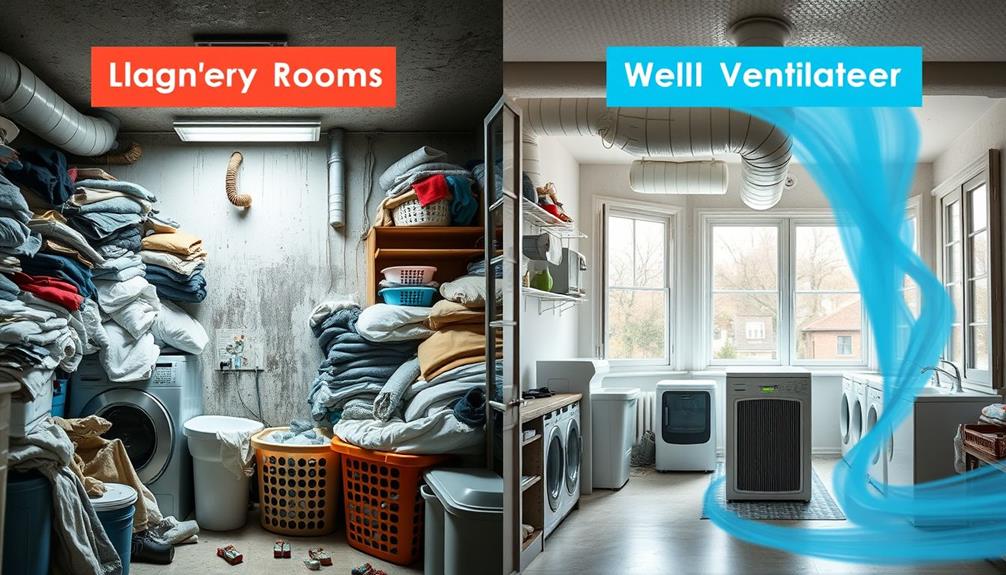
You mightn't realize it, but using inadequate vent sizes and neglecting regular maintenance can seriously compromise your laundry room's ventilation.
If your ducts are too small or clogged with lint, you're risking overheating and lower efficiency.
Let's explore these common mistakes to help you keep your space safe and effective.
Inadequate Vent Sizes
Inadequate vent sizes can lead to serious issues in your laundry room, restricting airflow and reducing dryer efficiency. The standard diameter for dryer vent ducts is four inches; anything smaller can cause blockages, increasing the risk of lint buildup. This not only hampers the dryer's performance but also leads to longer drying times, wasting both energy and time.
Additionally, if your laundry room contains gas appliances, it's vital to guarantee proper ventilation to avoid any safety hazards associated with gas buildup safety precautions necessary.
Moreover, insufficient vent sizes can compromise your ventilation system, resulting in higher humidity levels that create an ideal environment for mold growth. When your vent lengths exceed 35 feet, or if there are too many bends in the duct, the efficiency continues to drop, making proper sizing and installation essential.
It's important to regularly check and maintain your vent sizes to make sure they comply with safety regulations. Inadequate vent sizes not only affect performance but also pose a fire hazard due to lint accumulation.
Neglecting Regular Maintenance
Regular maintenance of your laundry room's ventilation system is crucial for ideal performance. Neglecting this maintenance can lead to considerable issues, including reduced airflow efficiency and increased lint buildup.
Clogged dryer vents should be cleaned at least once a year; otherwise, they can decrease dryer performance by up to 30%. This not only results in longer drying times but also raises your energy costs. Additionally, setting realistic weight loss goals can help maintain motivation for any home improvement projects that involve physical activity.
Inadequate humidity removal due to unmaintained exhaust fans can create the perfect environment for mold growth and structural damage over time. Regular inspections help you identify blockages or damage early, preventing costly repairs and guaranteeing compliance with local building codes.
Additionally, ignoring lint trap maintenance allows lint to escape into the venting system, which exacerbates airflow restrictions and greatly increases the likelihood of dryer fires.
Keeping your vents clean and well-maintained isn't just about efficiency; it's about safety. By committing to regular maintenance, you can guarantee your laundry room operates smoothly while minimizing risks associated with poor ventilation.
Take action now to protect your home and enhance the performance of your laundry room.
Effective Ventilation Solutions

When it comes to maintaining a comfortable laundry room, effective ventilation solutions are important to combat humidity and improve air quality. One of the best ways to achieve this is by installing a powered exhaust fan. This fan should match the room's size in CFM (cubic feet per minute) to efficiently remove hot, stale air and reduce humidity levels.
Additionally, considering return policy details for appliances can help you make informed purchasing decisions, guaranteeing you have the right equipment for your laundry room.
Another excellent option is an Energy Recovery Ventilator (ERV). These systems draw out hot, humid air while bringing in fresh outdoor air, conserving energy and enhancing indoor air quality.
It's also essential to make sure your dryer vents outside, using smooth metal hoses instead of corrugated plastic. This minimizes heat and humidity and lowers the risk of lint buildup, a common fire hazard.
If possible, incorporate at least one operable window in your laundry room. Opening it while your appliances run allows for natural ventilation, preventing off-gassing from detergents.
Maintenance and Safety Tips
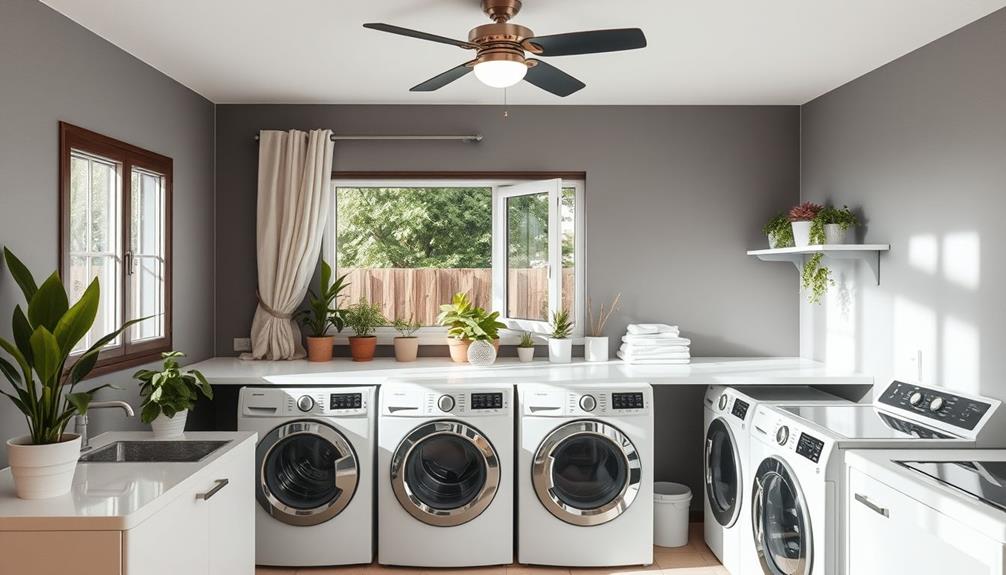
Maintaining your laundry room's ventilation system not only guarantees comfort but also promotes safety. Proper room ventilation is important to prevent issues like excess humidity and airborne lint, which can lead to serious hazards.
Regularly confirming that your pets, such as Maltipoo names available for selection, are kept away from the laundry area can also help minimize distractions and potential accidents.
Here are some essential maintenance and safety tips to keep your laundry room efficient and safe:
- Regularly clean dryer vents and ducts to prevent lint buildup, reducing fire risks.
- Schedule routine maintenance for your vent fan to ensure it effectively mitigates humidity levels.
- Inspect vent systems for blockages or damage to maintain airflow and prevent mold growth.
- Use lint traps and filters in your dryer vents to capture lint before it clogs ducts.
- Consult with professionals for regular dryer vent cleaning to comply with local building codes.
Professional Assistance and Resources
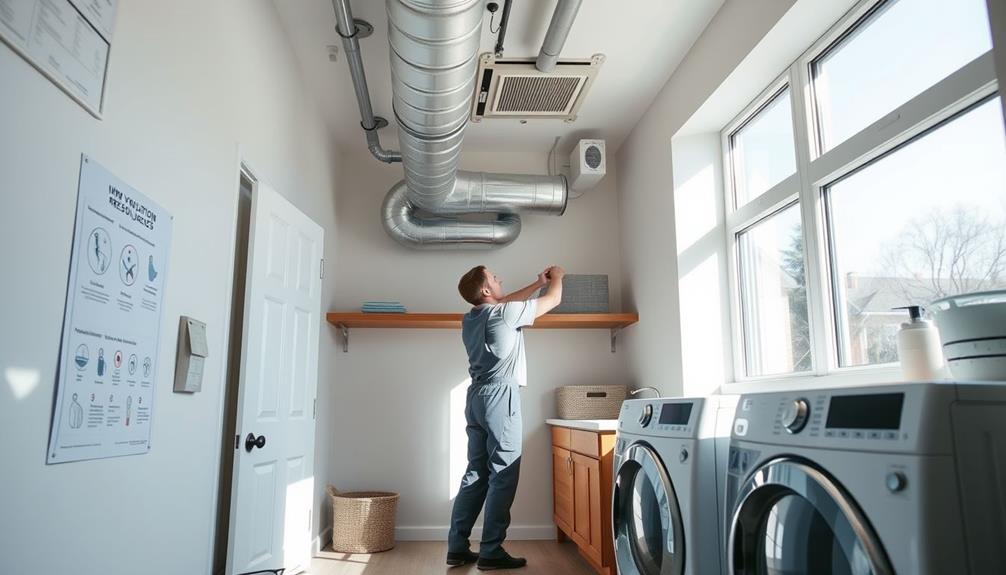
Finding the right professional assistance for your laundry room ventilation can make a significant difference in safety and efficiency. Companies like Hartman Brothers specialize in laundry room ventilation, guaranteeing your system meets local building codes and ventilation requirements. This compliance not only enhances safety but also improves indoor air quality.
Additionally, proper ventilation can help prevent moisture-related issues and mold growth, which are essential for maintaining a healthy home environment. For more insights on diversification of retirement portfolio, consider the importance of investing in various areas, including home maintenance.
For maintenance, consider working with Jackson & Sons, who offer professional dryer vent cleaning services. Regular cleaning minimizes fire hazards associated with lint buildup, keeping your home comfortable and safe.
If your ventilation system involves complex installations, consulting certified professionals is vital. They'll provide proper setup and adherence to ideal ventilation practices, which can save you time and money in the long run.
To further educate yourself on ventilation, download a free Home Comfort Guide. This resource covers ideal ventilation practices and maintenance tips, empowering you to take charge of your home improvement projects.
Frequently Asked Questions
How Do You Ventilate a Laundry Room?
To ventilate your laundry room, install an exhaust fan for effective airflow, use smooth metal dryer vents, keep a window open for natural air, and regularly clean all vent systems to prevent blockages and hazards.
Do I Need Ventilation in My Laundry Room?
Yes, you need ventilation in your laundry room. Proper airflow prevents humidity buildup and reduces mold risk, keeping your space safe and healthy. It also guarantees your appliances work efficiently and minimizes fire hazards.
What Is the Best Vent for a Laundry Room?
The best vent for your laundry room is a smooth metal dryer vent, ideally four inches in diameter. This design minimizes lint buildup and boosts airflow efficiency, keeping your space safe and functioning well.
What Is the Best Way to Ventilate a Utility Room?
For fantastic airflow in your utility room, consider installing a powerful exhaust fan. Incorporate energy recovery ventilators and guarantee smooth metal ducts vent directly outside. Don't forget to maintain these systems to maximize effectiveness and safety!
Conclusion
Now that you know how essential proper ventilation is for your laundry room, don't wait until you're faced with mold or musty odors to take action. Imagine opening that door and being greeted by fresh air instead of stale, damp smells. By implementing the right ventilation solutions and staying vigilant about maintenance, you can prevent potential disasters. So, are you ready to create a healthier, more inviting space? Your laundry room deserves it—don't ignore the signs!
